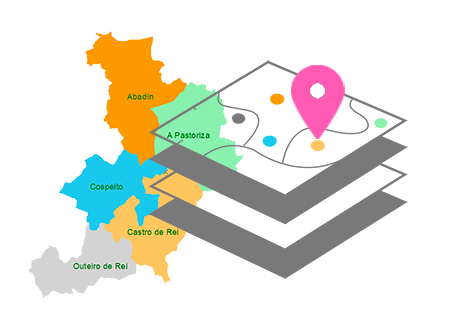MANCOMUNIDADE
HERITAGE
Although there are indications of the existence of people in this municipality from the Palaeolithic (an Acheulean biface was located in the Silvarrei area ), the first major traces of Outeiro de Rei ‘s historical past date back to the Megalithic period (4000-2000 BC ). The abundance of “mámoas” (prehistoric tomb from the Megalithic) located in its term, among which the “Medorra da Pedra Dereita” in Martul and grave goods found in these funerary monuments (preserved today in museums and private collections) and the rock taxed or petroglyphs scattered its mountains, reveal the presence during this stage of a fairly large and active population.
From then until now with the existing literature and archaeological references, it is logical to think that this place was inhabited continuously. First, by the “castreña” population (800 B.C.-100 A.D.), with several “castros” (walled villages) listed in this municipality, all unexcavated, and among those is the Castro of Candai located within the boundaries of the parishes of Aspai and Candai.
Later, the Romans (60 BC-410 AD), which are supposed to arrive here shortly after founding the city of Lugo (25-20 BC), baptized this place with the name of Octodorum (where the Roman road XX Braga-Astorga passed through), according to most historians and classical sources consulted. But the medieval period (s. VIII-XV) is undoubtedly when this town experienced its greatest splendor, after the Arab invasion and later conquest of the territories of the province of Lugo by bishop Odoario, territories among which were the parishes of Silvarrei, Cela and Parada.

In the parish of Gaioso inside the spacious recreational area of Penas de Rodas, we find two original granitic masses that from their elevated position (619 m.) overlook a panoramic view of the Terra Cha. These stones are the result of differential erosion and around them numerous legends were born. The most widespread one states that the inside of one of the stones is filled with gold, and the first person to break the stone will get it.
- Time – 1-2 Hours
- Accessibility
- Singular Heritage
- Restaurant Nearby

The Casa-Museo Manuel Maria hosts and exposes to the visiting public the whole artistic and bibliographic legacy of perhaps the most prolific literary voice of the second half of the XX century: his personal library of over 12,000 volumes that make it one of the best private collections of Galician books and about Galicia, the poet’s famous collection of knives, a collection of paintings with works by some of the most important Galician painters contemporaries (Castelao, Maside, Laxeiro, Abelenda, Sucasas, Lugrís, Seoane, Leandro, Blas Loures …)
- Time: 1-2 hours
- Accesibility
- Museum
- Restaurant Nearby
Built in the s. XV by Fernan Perez de Ribadeneira, it had to be rebuilt after being demolished in 1467 by the “irmandiños”; currently it presents a poor state of conservation. The tower, made of slate masonry, is square in shape and measures 9.35 meters wide and 15 meters high. It has three bodies or floors and granite windows and a door once, also of granite, which certainly put the tower in communication with the Sobrada palace.
- Time: 1 hour
- Accessibility
- Medieval Heritage
- Restaurant Nearby
Primitive lot belonging to the Saavedra family, which today stands only as an incomplete tower in ruins, partially overgrown. It has the shape of a truncated pyramid square, or almost square; made of slate and filled with debris approximately to a third of its height. It presents on the SW facade a single gateway, which corresponds to the missing drawbridge, while there is a small triangular window with granite lintel in the upper SE.
- Time: 1 hour
- Accessibility
- Medieval Heritage
- Restaurant Nearby








